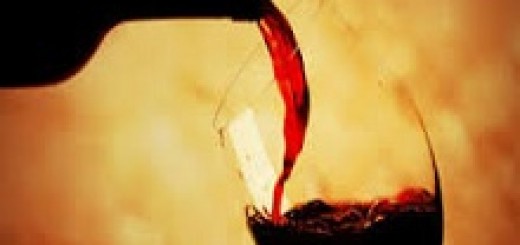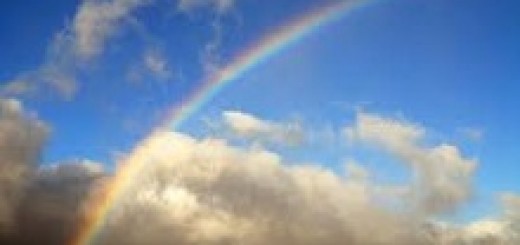As stated above, all the kosher laws were either commanded by G-d at Sinai and incorporated in the Torah along with the other mitzvoth; or are oral traditions which go back to Moses, who received them from G-d; or were ordained by the sages for the purpose of safeguarding and strengthening their observance and with health considerations in mind. Kosher (כשר) means, “That which is fit[1] to eat according to biblical dietary law”. Now, though the kosher dietary law is comprised of many diverse subjects, nonetheless, since they chiefly revolve around the consumption of meat, we will, therefore, begin by explaining the requirements of kosher meat. Before meat may be consumed several prerequisites must be fulfilled:
Kosher and Non-Kosher Animals
Only the meat of certain animals may be consumed.[2] The Torah specifies the signs by which to recognize kosher animals.[3] They all are herbivores which chew their cud (That is, they must be ruminators) and have completely split hooves.[4] Of the domesticated animals, this includes cows, sheep and goats.[5] Kosher undomesticated animals include the addax, antelope, bison, buffalo, deer, gazelle, ibex, and reindeer,[6] as well as others too numerous to enumerate here. (You are not likely to find them in your neighborhood grocery store.) The Torah also lists four animals that only have one of these characteristics, but not the other.[7] They include the pig, which has split hooves but does not chew its cud, and the camel, hare and rock-badger, which chew but do not have split hooves.[8] These animals are not kosher.
It is interesting to note that though much of the world; such as Australia, North America, South America, Antarctica and great portions of Africa, Asia and Europe, were as yet, undiscovered when the Torah was written, the Torah, nonetheless, emphatically states that these four species possess only one kosher characteristic and not the other. The Talmud[9] concludes that since only these species were named, no other such species exist. Incredibly, though tens of thousands of previously unknown creatures have since been discovered, categorized and studied, not a single additional one fits this description. This, itself, is ample proof of the Divine authorship of the Torah. Only the Creator Himself could know with certainty that no other such animals exist.
Indeed, the Malbim writes[10] that had a human being, such as Moses, authored the Torah himself; he would never have risked destroying his credibility by listing these four animals. He could simply have stated that onlyanimals that possess both these signs are kosher and left it at that. That would have been sufficient information for us to recognize the kosher animals and to reject the non-kosher ones, including those which possess only one of the two signs.
Kosher and Non-Kosher Fowl
The Torah lists twenty-four families of non-kosher birds[11] which, according to modern scientific classification, include thousands of known species and sub-species. Some of the non-kosher birds listed in the Torah are the barn owl, bat, cormorant, eagle, falcon, gull, hare, hawk, hoopoe, ibis, kite, magpie, ossifrage, osprey, ostrich, owl, pelican, raven, stork, and vulture. Though it is a mammal, the Torah includes the bat in the list because it uses different criteria for classification than modern science. The word “Auf” – עוף in Hebrew, which is usually translated as fowl, actually means anyflying creature.
Though the Torah does not specify the signs by which to recognize a kosher bird,[12] as it does with other animals, nonetheless, the rabbis[13] gave us four general indicators by which to differentiate between kosher and non-kosher fowl.[14] Not all kosher birds possess all four indicators and some non-kosher birds may possess one of them, therefore, they are general guidelines rather than sure signs. Two of these signs are primary indicators of the kosher status of the bird and two are secondary.
The two primary indicators are:
a) The muscular wall of the gizzard of a kosher bird may be easily peeled off by hand, whereas the gizzard of a non-kosher bird will not peel easily.[15]
b) Non-kosher birds tend to be birds of prey that hunt for their food. Therefore, they will use their claws to capture and hold their prey as they devour it.[16] Kosher birds do not eat in this fashion.
The secondary indicators are:
a) Kosher birds will tend to have three toes in the front and one extra toe in the back, whereas non-kosher birds may have two, three or four toes. They may have three toes in the front and one in the back, two toes in the front and two in the back or all four toes in the front.[17]
b) Many kosher birds will possess a crop which non-kosher birds do not have. This is a pouch-like organ on the wall of the esophagus which temporarily stores undigested food before it goes to the stomach to become fully digested. Ducks and geese do not have crops. However, since they possess the other three indicators of a kosher bird they are kosher.[18]
Since the four above indicators are not of biblical origin and it would be extremely difficult to determine the kosher status of all the thousands of bird species, therefore, generally, only birds that are known to be kosher by tradition are consumed.[19] The most common birds that are traditionally accepted as being kosher are:
a) All members of the chicken family.
b) Domesticated ducks.
c) Domesticated geese
d) Pigeons and doves
e) Domesticated turkeys[20]
Geese that have been forced fed by ramming a metal funnel down their throat could lose their kosher status because this method of feeding can puncture the esophagus. This would render the goose a treifah, which, as will be explained, means that the animal has a physical condition which will lead to its death.
Prohibition of Eating Neveilah or Treifah
It is forbidden to eat the meat of an animal that died by itself or was not slaughtered in accordance to the laws of Shechitah[21] (kosher slaughter). Such an animal is called a neveilah[22] (נבילה). Moreover, the meat may not come from an animal that has some kind of physical condition that will cause its death.[23] If it is diseased, has a birth defect, is mortally wounded, has a defective organ or limb which will lead to its demise, or is otherwise close to death,[24] either due to frailty, old age or sickness; that animal is called a treifah[25] (טריפה) and is forbidden to eat.[26]
In his magnum opus, Mishneh Torah, Maimonides gives a complete list of seventy defects that render an animal treifah.[27] Only the symptoms mentioned there render it so and no others. If veterinary science would determine that an animal will imminently die from different causes, this would have no bearing on the kosher status of an animal.[28] In the same vein, if science would determine that a defect which is included in the list is not so serious and does not indicate imminent death, the animal would still be considered to be a treifah and would be forbidden.[29]
[1] ספר השרשים, שרש כשר
[2] רמב”ם הל’ מאכלות אסורות, פרק ב:א
[3] Leviticus 11:2-3
[4] רמב”ם הל’ מאכלות אסורות, פרק א:ב
[5] רמב”ם הל’ מאכלות אסורות פרק א:ח
[6] שם פרק א:ח
[7] Leviticus 11:4-8
[8] רמב”ם הל’ מאכלות אסורותת פרק א:ב, ופרק ב:א
[9] גמ’ חולין נט ע”א עד ס ע”ב
[10] On Leviticus 11:4
[11] רמב”ם הל’ מאכלות אסורות, פרק א:יד, שו”ע יו”ד פב:א.
[12] שו”ע יו”ד פב:א.
[13] רמב”ם הל’ מאכלות אסורות א:טז.
[14] רמב”ם, מאכלות אסורות א:טז, שו”ע פב:ב.
[15] רמב”ם הל’ מאכלות אסורות שם, שו”ע יו”ד פב:ב.
[16] משנה חולין נט ע”א, וראה רמב”ם, מאכלות אסורות שם, שו”ע יו”ד שם.
[17] רמב”ם הל’ מאכלות אסורות שם, שו”ע יו”ד שם.
[18] רמב”ם הל’ מאכלות אסורות שם, שו”ע יו”ד שם.
[19] רמב”ם הל’ מאכלות אסורות א:טו, שו”ע פב:ב.
[20] השל”ה אסר אכילתו אבל בספר נחל אשכול סי’ כב כתב שנאכל במסורת מדורות וכן נהוג, ואעפ”כ אם יש מסורת משפחתי שלא לאכלו ראוי שאנשי המשפחה לא יאכלוהו.
[21] רמב”ם הל’ מאכלות אסורות, פרק ד:א
[22] Deuteronomy 14:21
[23] Exodus 22:30
[24] That is, it will likely die within a twelve month period.
[25] רמב”ם הל’ מאכלות אסורות, פרק ד:ו-יב, הל’ שחיטה פרק ה:א
[26] Exodus 22:30
[27] רמב”ם הלכות שחיטה י:ט
[28] שם י:יב
[29] שם י:יג






















